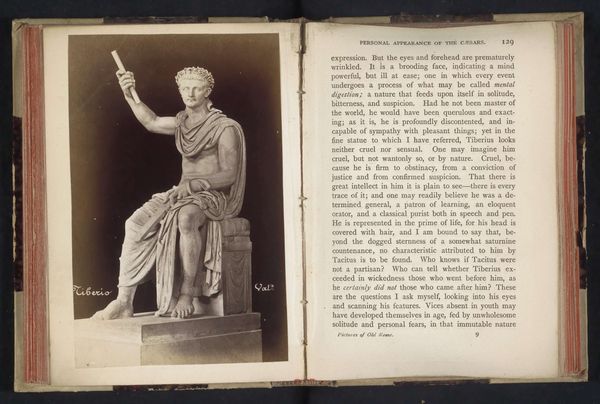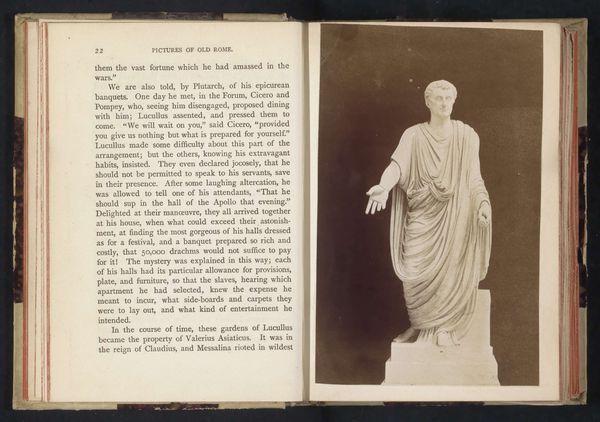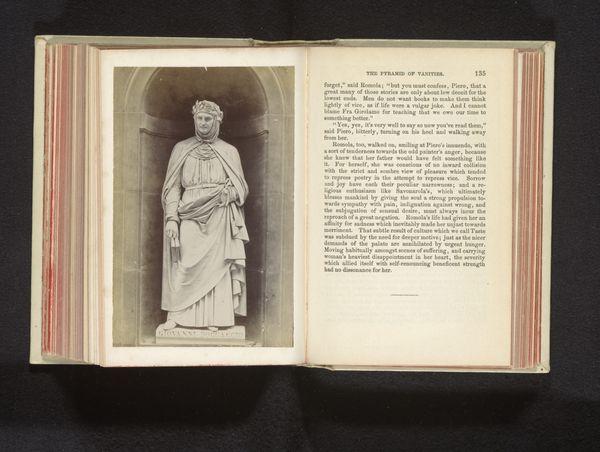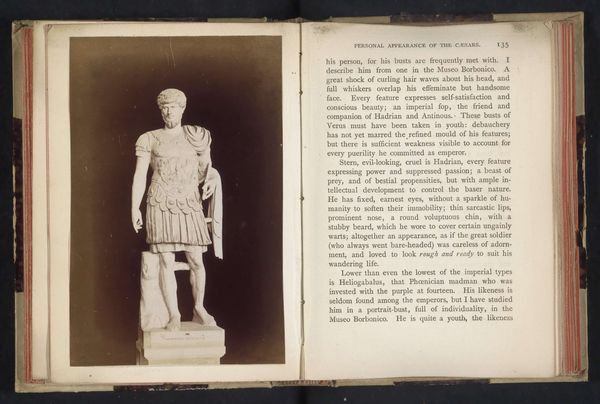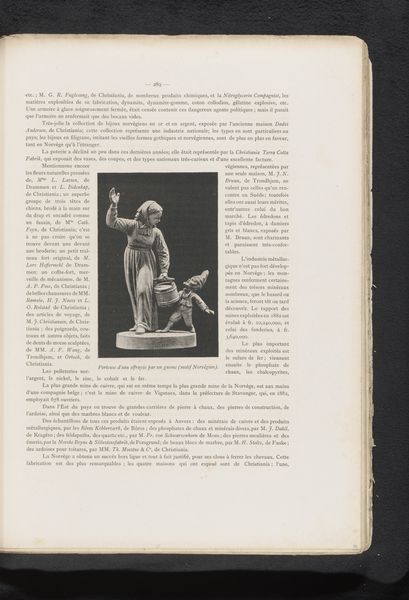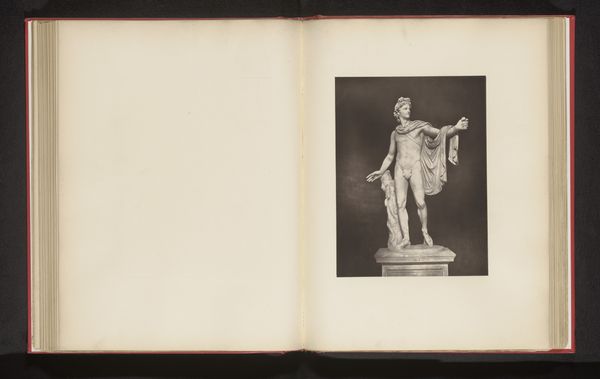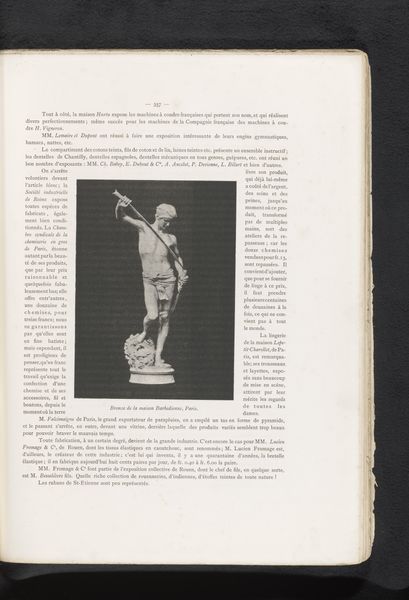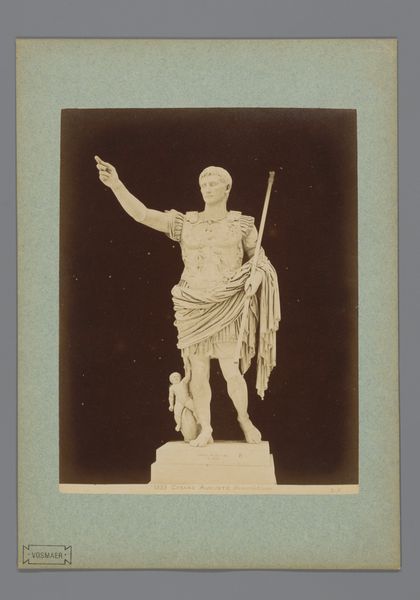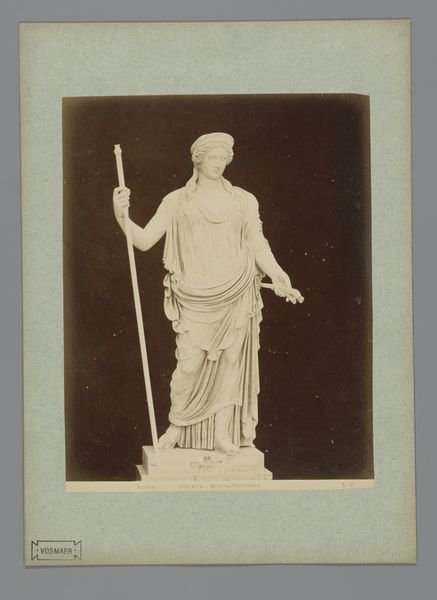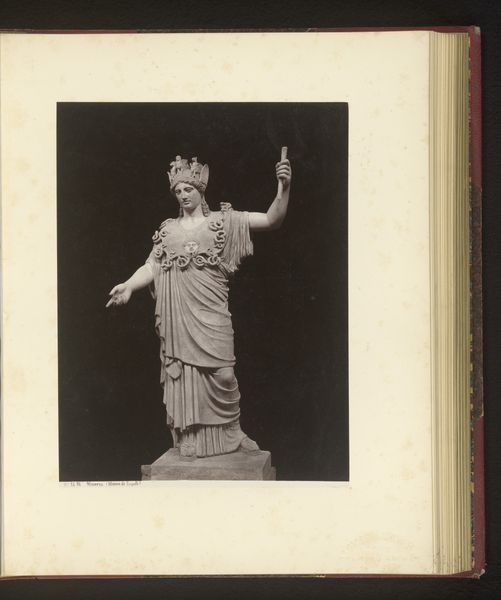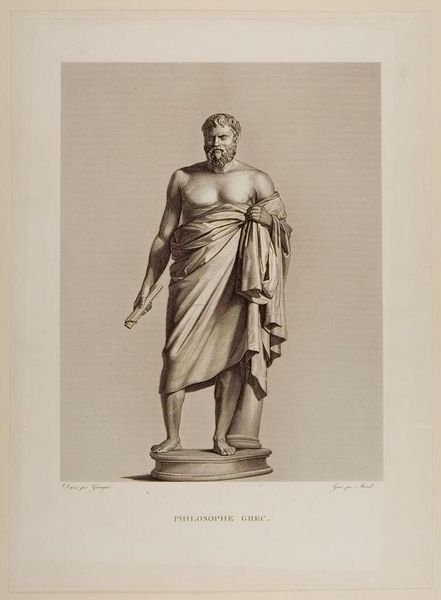
Sculptuur van keizer Claudius I in de Vaticaanse Musea te Vaticaanstad before 1882
0:00
0:00
print, photography, sculpture
#
portrait
# print
#
photography
#
romanesque
#
ancient-mediterranean
#
sculpture
Dimensions: height 143 mm, width 90 mm
Copyright: Rijks Museum: Open Domain
Curator: This image depicts a photograph of a book spread from before 1882, currently held at the Rijksmuseum. The book features a photograph of a sculpture, specifically, "Sculptuur van keizer Claudius I in de Vaticaanse Musea te Vaticaanstad." Editor: It's striking how the sepia tone of the photograph mutes the white marble of the original sculpture. The tight crop emphasizes Claudius's physique, creating a somewhat austere and powerful impression. Curator: Right. The sculpture itself presents Claudius in a Roman style, likely referencing idealized forms and conventions that were commonplace for representing emperors. Note the inclusion of the eagle – a potent symbol here. Editor: Absolutely. The eagle, of course, evokes Jupiter and Roman imperial power. But I'm also intrigued by the laurel wreath atop Claudius' head, a classic signifier of victory and leadership. I also detect a look in his eyes, hinting at both anxiety and an aspiration toward respect. His legacy is one of both intellectualism and brutality. Curator: It is interesting to consider the various layers of materiality present. The photograph itself, as a physical object, would have been crafted with particular chemicals, paper stock, and processes. And that's set within the bound form of a mass-produced book. Both speak to labor and a context of 19th-century image circulation. It’s a copy of a copy, democratizing an idealized likeness. Editor: True. Beyond the context of the photo's production, though, there’s also Claudius’ own complicated, powerful self-representation happening in the marble. Every emperor had to forge an identity, both personal and dynastic, to legitimize his rule through chosen symbols and what that said about the strength of the state. Curator: Examining the photographic process also gives insights into the consumption of ancient art during this era. This photographic representation makes something previously exclusive, in terms of time and geography, accessible to a broader audience. Editor: Definitely. Seeing it framed within a book also lends this photo a quality of preservation—it contains the sculpture while simultaneously granting it passage through time. The dialogue created through symbols makes this far more than a straightforward image. Curator: So while the picture's value lies in its documentation and craft, it seems its enduring allure springs from Claudius's manipulation of iconography. It highlights a convergence of art and historical documentation—all within the constraints and opportunities of 19th-century print culture.
Comments
No comments
Be the first to comment and join the conversation on the ultimate creative platform.
